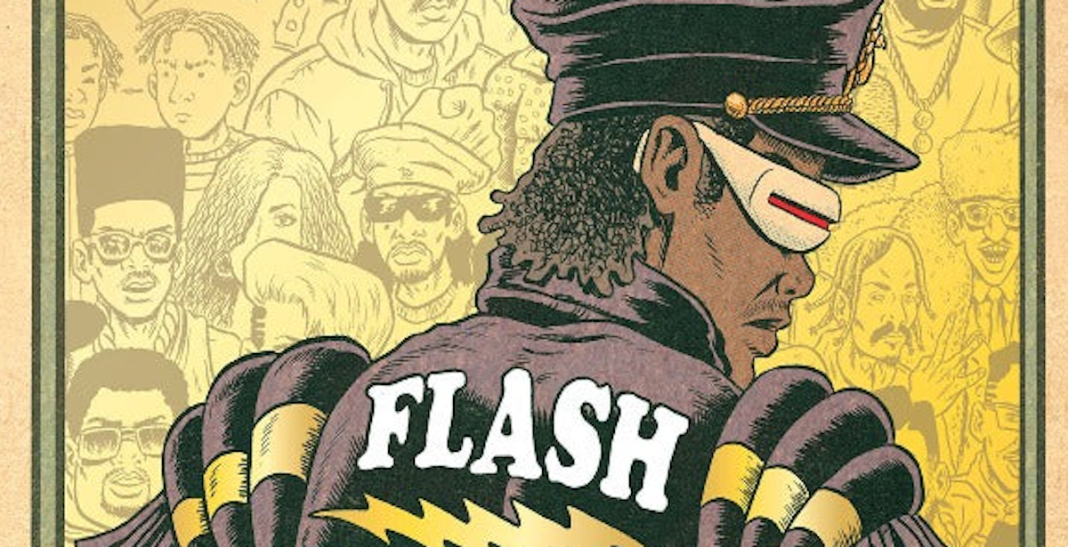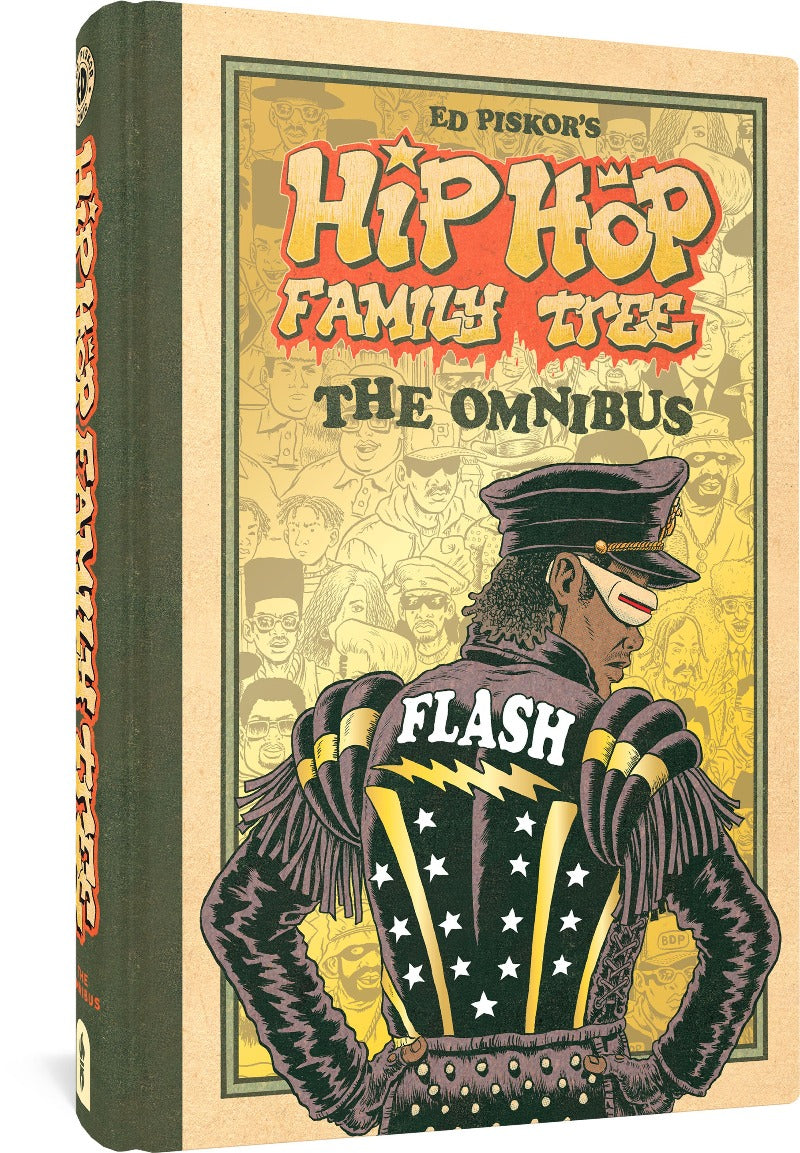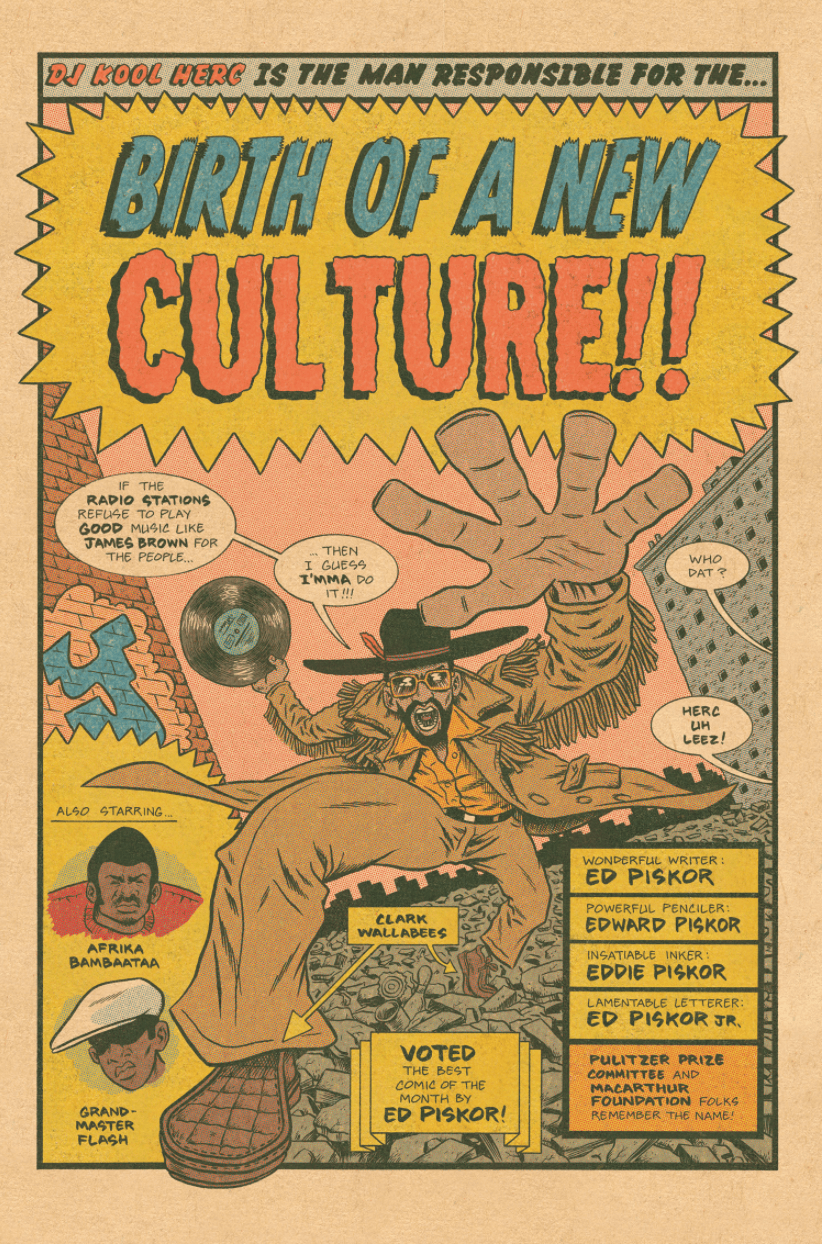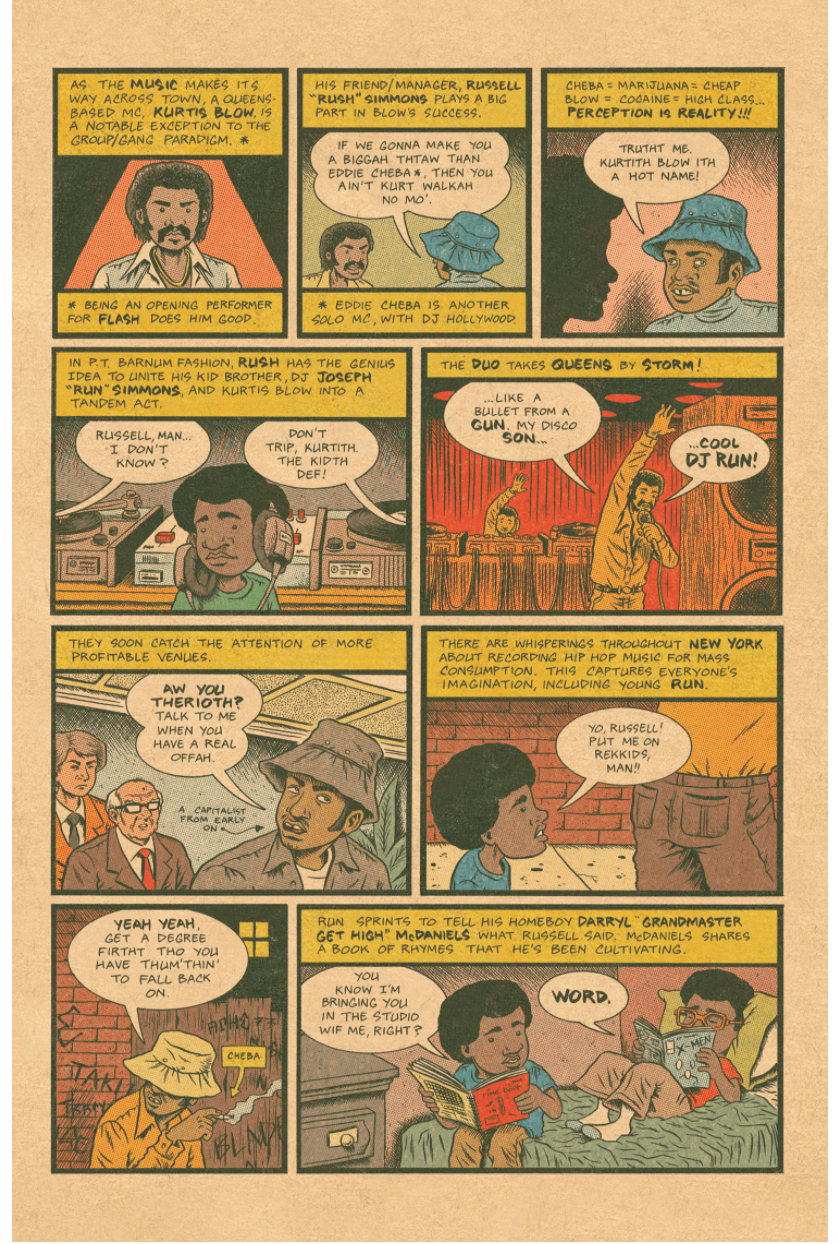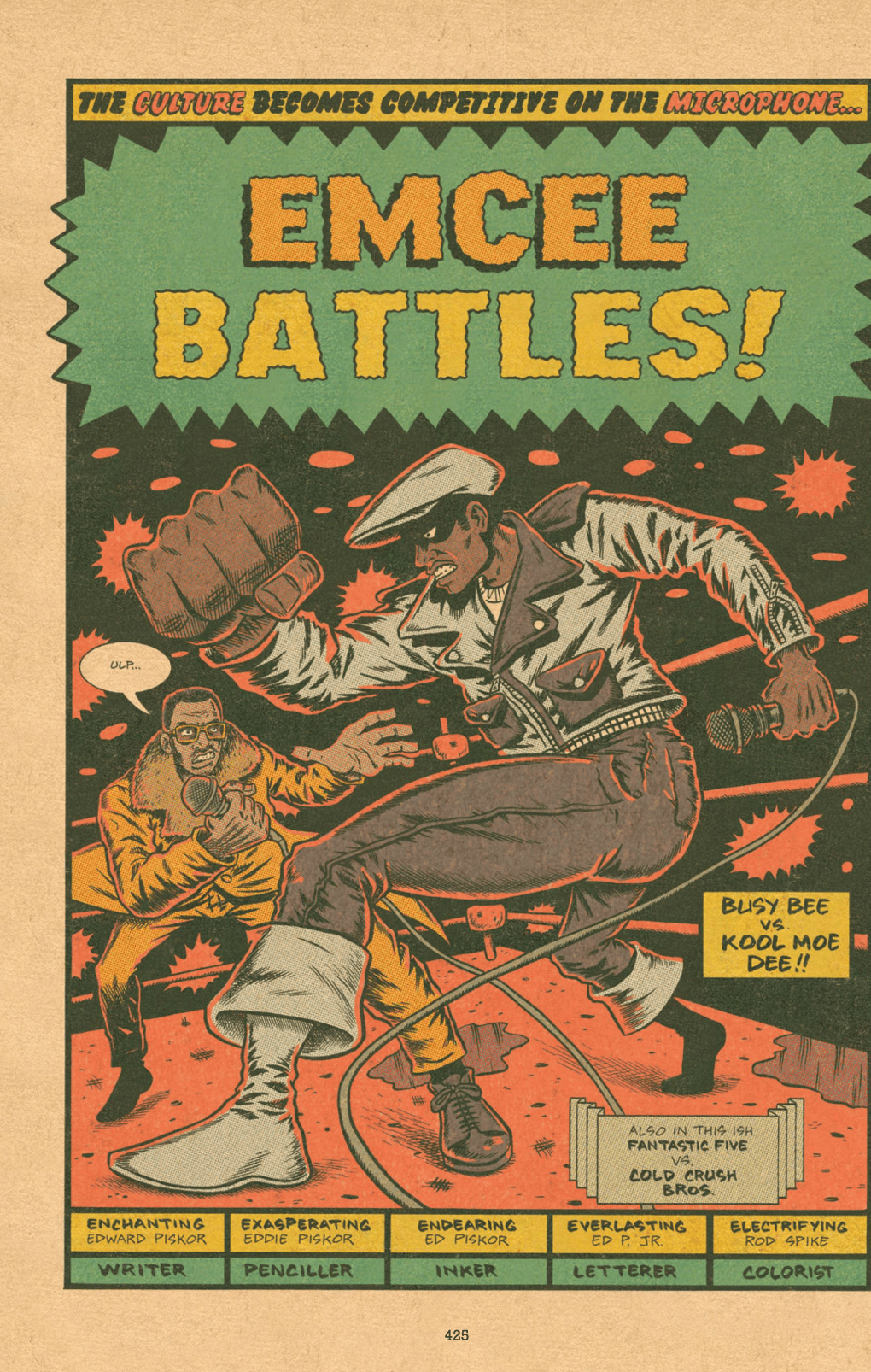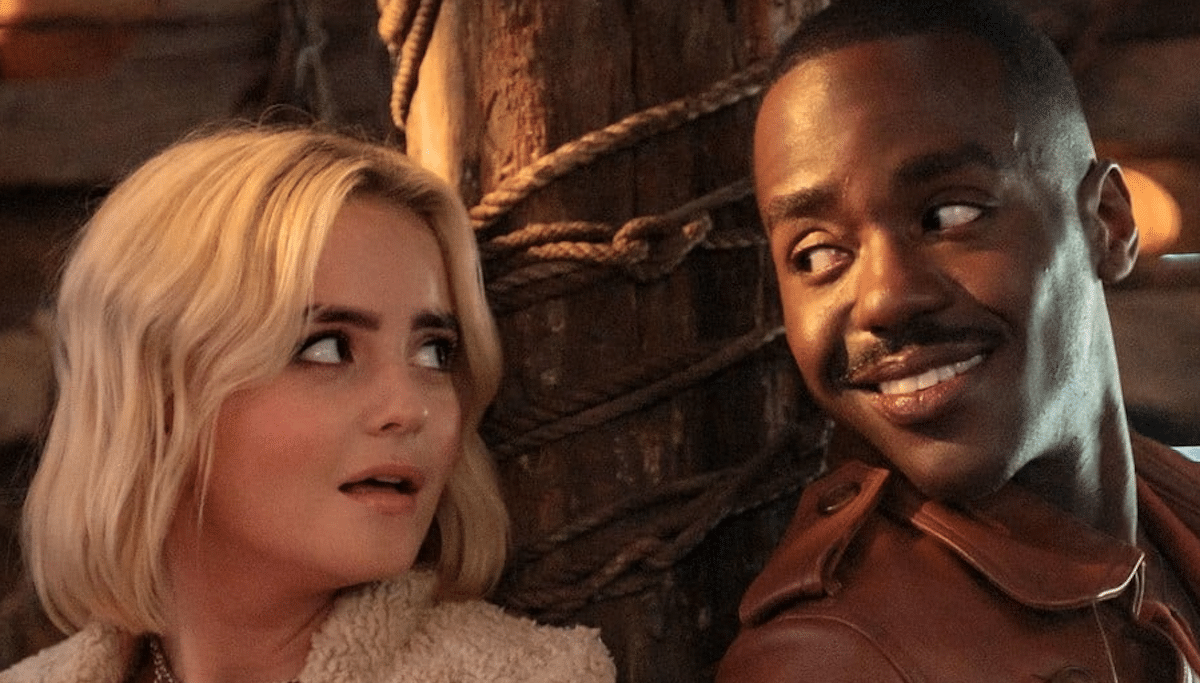Before the splatter of Red Room and the streamlining of X-Men lore, Pittsburg cartoonist Ed Piskor honed his lovingly retro aesthetic with Hip Hop Family Tree. Over four volumes, Piskor devotedly chronicled the early years of hip hop culture, recording the nascent art form’s rise from street music to a global cultural phenomenon.
As it was released, HHFT was praised for its accuracy, insight, and devotion to minutiae. This was no dilettante exploring hip hop as a subject for a book. Rather, Piskor is immersed in the subject. And this passion comes through on the page. Later this year, Fantagraphics plans to release an omnibus edition of Hip Hop Family Tree, collecting all four volumes of the series, as well as over 140 pages of new material, including a cover gallery, never-before-collected pages from the HHFT comic book series, and new annotations from Piskor himself.
The Beat had the opportunity to interview Ed about his work on Hip Hop Family Tree. Piskor discussed his inspiration for the series, his thoughts on the legacy of hip hop culture, working with Harvey Pekar, and if he may ever produce another volume of HHFT in the future.
AJ FROST: Hey there Ed. Thank you for taking the time to chat with me. My first exposure to your work was Hip Hop Family Tree, volume 1¸so I’m excited to dive into this conversation. I’ll admit that after reading that oversized edition, I was hooked on your work. Looking back, what was the spark that led you to design Hip Hop Family Tree as a serialized graphic history?
ED PISKOR: I was simply doing weekly strips on Boingboing.net which at the time was one of the most viewed websites in the world. The strip was called “Brain Rot” and HHFT was just another episode…until I posted the first one. Then it went viral and there was no turning back. I wanted to do more after I posted that first one and the public made it known that they wanted to see more.
FROST: What was your goal at the time of the project’s conception?
PISKOR: The goal was and is to make the best comics I can at the time.
FROST: I know that with your collaboration with Harvey Pekar and the publication of Wizziwig preceded HHFT. How did those projects strengthen your chops so that you felt ready to undertake the HHFT books in earnest?
PISKOR: Working with Harvey on his satellite projects, The Beats and Macedonia gave me a crash course on making comics where each panel is a completely different span of time than your traditional comic. Most comics are told within a much shorter span when it comes to panel-to-panel transitions, sometimes it’s seconds of time between drawings, in HHFT there would be years between panels and Harvey helped show me how to make those clear transitions.
FROST: What major challenges did you face in representing the multifaceted history of hip hop on the page?
PISKOR: In order to maintain accuracy I needed to go deep into the research, which is the invisible part of the process for this kind of comic. So I had to balance the research with the need to get 2 pages of comics done per week.
FROST: Considering hip hop’s 50th anniversary this year, how do you see Hip Hop Family Tree as a marker, or a reflection, of the genre’s evolution and its place in the popular culture?
PISKOR: That’s for the readers to decide. What I will say is that it’s a tremendous honor to have a book that’s gotten to live for a decade. That doesn’t happen often and will probably happen even less as time goes on.
FROST: And how do you see Hip Hop Family Tree in the conversation about the role of comics as a larger hub of cultural discourse?
PISKOR: With Hip Hop Family Tree, I can guarantee I’ve gotten people to read comics who haven’t otherwise done so. If every cartoonist would do at least one project with an audience that doesn’t rely on customers who are already here, then we’d have a really thriving culture of comics.
FROST: How did your own personal experiences as a hip hop fan and cartoonist inform your methodology for crafting Hip Hop Family Tree?
PISKOR: I tried not to let any fandom get in the way of the comic. I did have a decent cursory knowledge of the popular history of Hip Hop and I used this project as a way to dig deeper for pleasure, but it’s called “research” if a book turns out to be the end result.
FROST: Looking back, would you have done anything differently?
PISKOR: Nope.
FROST: In your author notes, you mention that you will likely not work on any more volumes of HHFT. I must ask, however, if you felt that spark, would you revisit these books and create more?
PISKOR: Absolutely. And I might just do that. I own most of my bibliography so I can revisit my titles whenever the muse strikes.
FROST: Now that the omnibus edition of HHFT is on the horizon, how do you hope this re-release will shape the way readers experience the series?
PISKOR: I don’t go into any of this with expectations, but I do think the delivery mechanism of this omnibus will catch the eyeballs of a bunch of new readers.
FROST: For the last several years, you’ve been working on the Red Room series and the Cartoonist Kayfabe YouTube channel. What’s next for you?
PISKOR: Working now on what’s going to be a daily comic strip that I’ll end up collecting in books. Should start releasing it on January 1, 2024.
FROST: What do you envision will be your next omnibus?
PISKOR: It’s hard to think about making more 500 page books while this one is so fresh. I’m gonna sit with this one for a while and continue keeping my head down and working hard on comics every day. Rain or shine. There will probably be more 500-page books in the future, however.
FROST: Thank you again for taking the time to talk with me.
The Hip Hop Family Tree Omnibus will be released by Fantagraphics on October 17th, 2023. Order HERE.
Follow Ed on Instagram and Cartoonist Kayfabe on YouTube.


